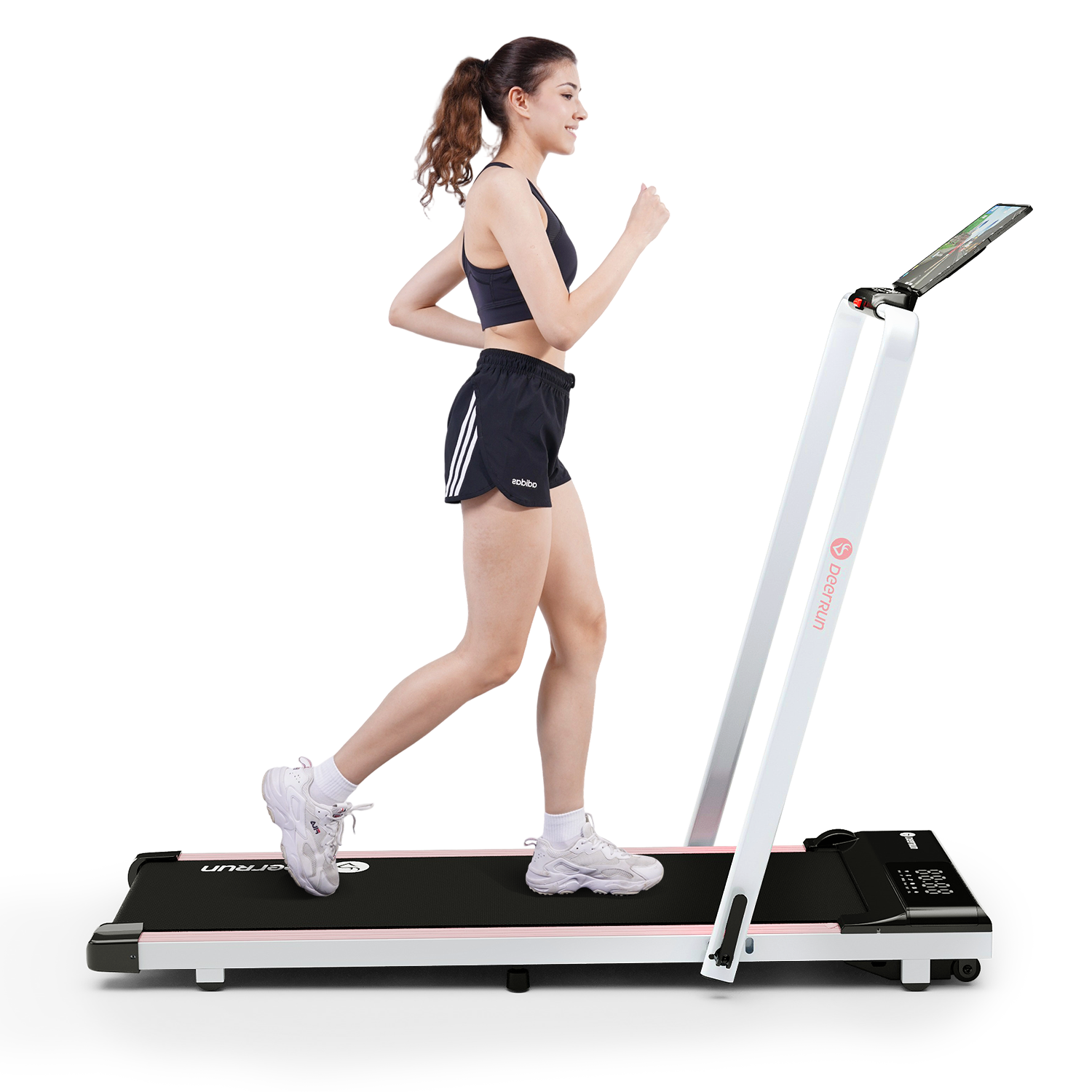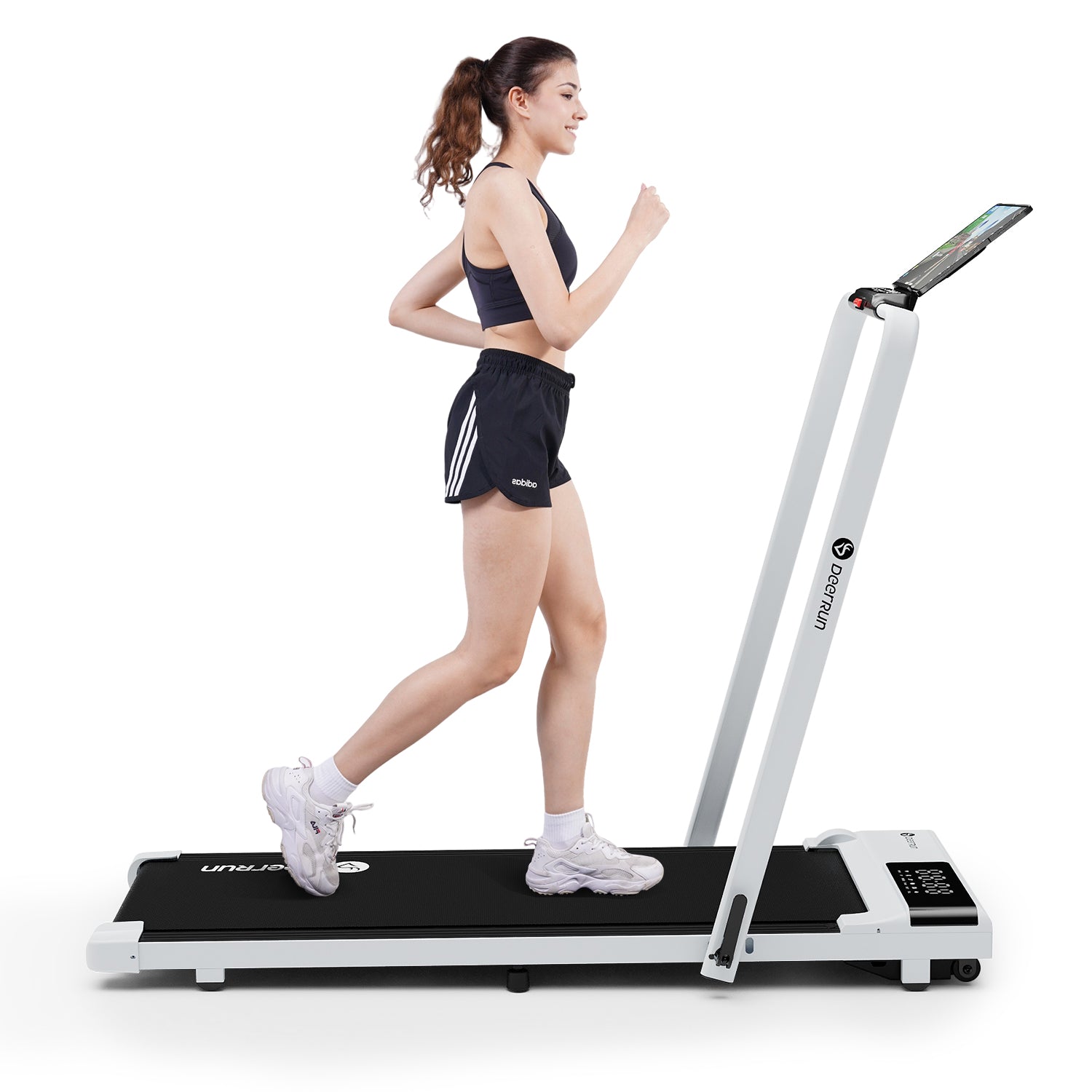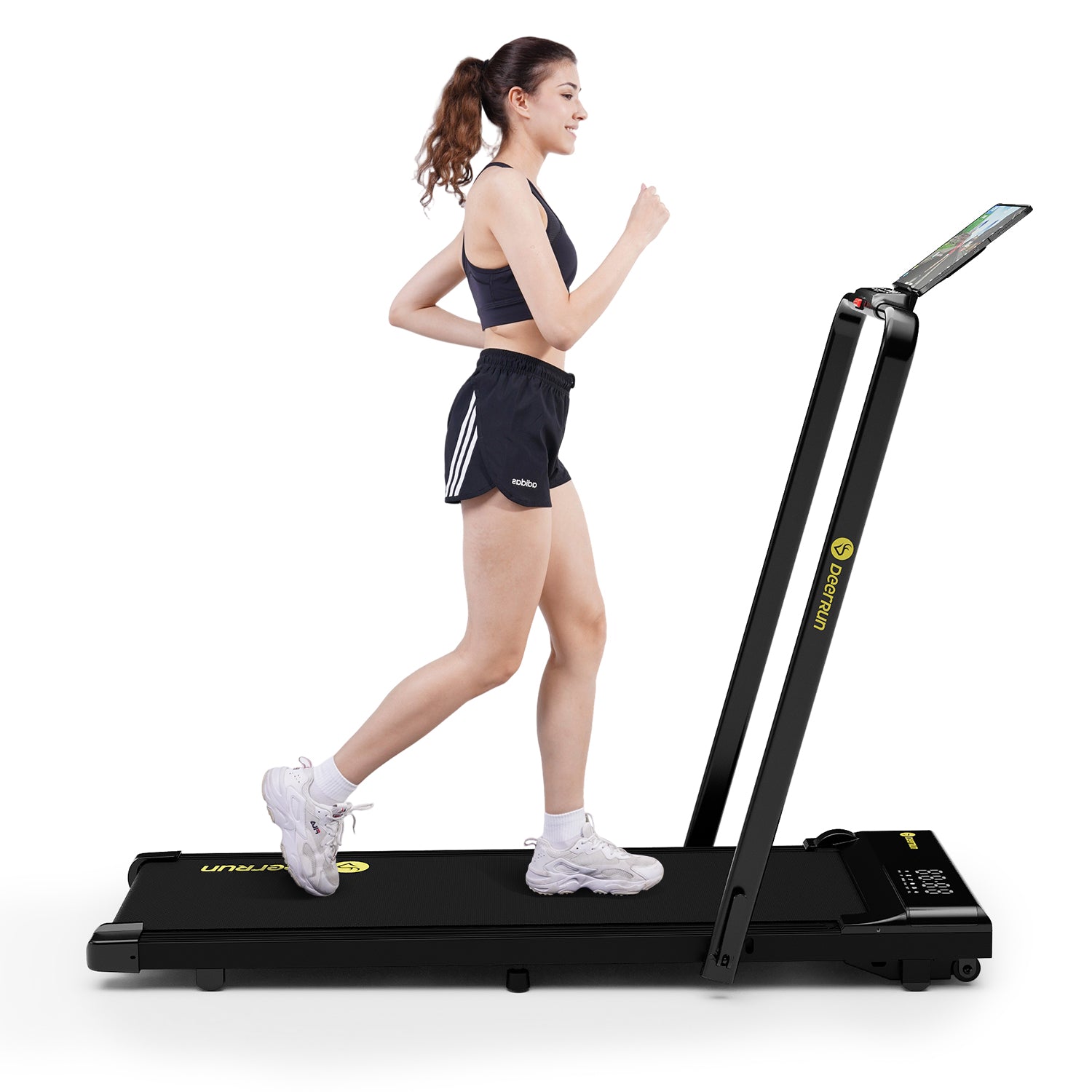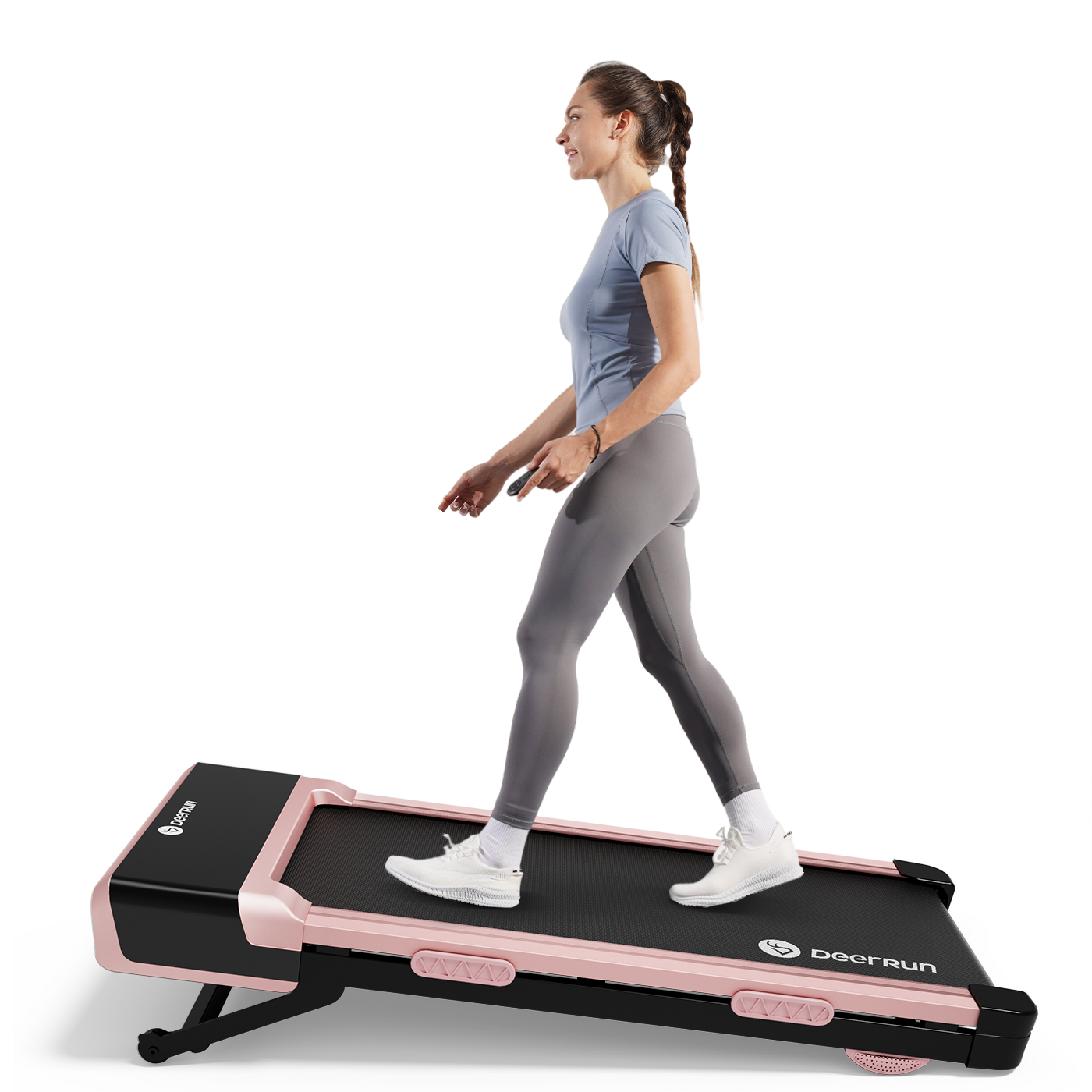A daily walk, a simple yet effective form of exercise, has long been touted as a cornerstone of a healthy lifestyle. It's an activity that allows us to step away from the hustle and bustle of our daily routines, clear our minds, and invigorate our bodies. But here lies the age-old question: Is walking on a treadmill as good as walking outside?
In this article, we delve into the treadmill vs. outdoor walking debate—a topic that has sparked discussions among fitness enthusiasts, health professionals, and everyday walkers alike. We aim to shed light on this dilemma, providing you with a comprehensive understanding of the advantages and disadvantages associated with each choice.
Before we dive into the specifics, let's first underscore the significance of physical activity for overall health. Exercise is not just a matter of aesthetics; it's the cornerstone of our well-being. Regular physical activity has a profound impact on cardiovascular health, weight management, and mental well-being. As we explore the treadmill and outdoor walking options, we'll keep this fundamental importance in mind.
The purpose of this article is to be your guide in making an informed choice. We'll navigate through the pros and cons of walking on a treadmill and walking outdoors, helping you determine which option aligns best with your preferences and lifestyle. So, whether you're a seasoned fitness enthusiast looking for a change or someone just starting their fitness journey, join us as we unravel the debate and discover the path that suits you best.
Benefits of Walking
Walking, a seemingly simple activity boasts a wide array of health benefits that can positively impact our lives in numerous ways. Below, we'll delve into the key advantages of walking:
Health Benefits of Walking:
- Cardiovascular Health:
Walking regularly can work wonders for your heart. It's a fantastic way to improve cardiovascular fitness by increasing your heart rate and improving circulation. This, in turn, helps lower the risk of heart disease, reduces high blood pressure, and enhances overall cardiac health. By consistently engaging in brisk walking, you can strengthen your heart and reduce the chances of experiencing heart-related issues.
- Weight Management:
For those aiming to shed some pounds or maintain a healthy weight, walking is an invaluable ally. It's a low-impact exercise that burns calories, making it an effective tool for weight management. By incorporating brisk walking into your daily routine, you can help create a calorie deficit and work towards your weight goals. Plus, it's a sustainable option that is less likely to lead to burnout compared to more strenuous exercises.
- Mental Well-Being:
Walking isn't just good for your body; it's a boon for your mind as well. Regular walks have been linked to improved mental health and reduced stress levels. The release of endorphins during physical activity can boost your mood and alleviate symptoms of anxiety and depression. Additionally, the simple act of walking provides an opportunity for mindfulness and stress relief, as it allows you to clear your mind and connect with nature or your surroundings.
Accessibility and Simplicity:
One of the most remarkable aspects of walking is its accessibility and simplicity:
- Accessible to Everyone:
Unlike many other forms of exercise, walking doesn't require special equipment or a gym membership. All you need is a comfortable pair of shoes, and you're ready to go. This makes it an inclusive activity suitable for people of all fitness levels, ages, and backgrounds.
- Ease of Incorporation:
Incorporating walking into your daily routine is incredibly convenient. It can be done virtually anywhere—around your neighborhood, at a local park, or even within your workplace during breaks. Whether you have a hectic schedule or limited time, you can easily find moments to take a walk and reap its benefits.
- Sustainability:
Walking is a sustainable form of exercise. Since it's gentle on your joints, you can maintain a long-term walking habit without the risk of overuse injuries. This makes it an ideal choice for those seeking a consistent, lifelong fitness routine.
In conclusion, walking is a holistic health solution that offers numerous advantages, from improving your heart health and managing weight to enhancing your mental well-being. Its accessibility and simplicity make it a viable option for everyone, regardless of age or fitness level. So, whether you're taking strolls through your local park or brisk walking to work, every step you take contributes to your overall health and well-being.
Treadmill Walking
Treadmill walking offers a unique set of advantages and drawbacks, making it a popular choice for some and less appealing to others. Let's take a closer look at the pros and cons of using a treadmill:
Advantages of Using a Treadmill:
- Weather-Independent:
One of the most significant advantages of treadmill walking is its weather independence. Regardless of rain, snow, extreme heat, or cold, you can exercise comfortably indoors. This consistency allows you to maintain a regular workout routine without being at the mercy of the elements.
- Controlled Environment:
Treadmills provide a controlled environment, which can be beneficial for those who need precise workout conditions. You can set the speed, and incline, and even simulate different terrains to tailor your workout to your specific needs. This control is particularly useful for rehabilitation purposes or when training for specific events.
- Built-in Features:
Many modern treadmills come equipped with a variety of built-in features. These may include heart rate monitoring, pre-programmed workouts, and even entertainment options like TVs or audio systems. These features can enhance your exercise experience and help you track your progress more effectively.
Potential Drawbacks of Traditional Treadmill Walking:
- Repetitive Scenery:
One common complaint among treadmill users is the repetitive scenery. Unlike outdoor walking, where you can explore new routes and enjoy changing landscapes, treadmill walking usually involves staring at the same spot or screen for the duration of your workout. This monotony can lead to boredom for some individuals.
- Cost and Space Considerations:
Treadmills can be a substantial investment, both in terms of initial cost and space requirements. High-quality treadmills can be expensive, and not everyone has the space to accommodate them in their homes. Additionally, maintenance and repair costs can add to the overall expense.
In conclusion, traditional treadmill walking offers several advantages, including protection from inclement weather, a controlled workout environment, and built-in features for monitoring and entertainment. However, it comes with drawbacks, such as the potential for a monotonous exercise experience and the cost and space considerations associated with treadmill ownership. Ultimately, the decision to use a treadmill should be based on individual preferences, goals, and circumstances.
If you want to get an ideal treadmill to walk at home, you can please kindly check the DeerRun Q1 Smart Underdesk Treadmill which is good for space-saving and can connect to a fitness app PitPat to help people have more fun.

Outdoor Walking
Outdoor walking offers a range of advantages and drawbacks that make it a popular choice for many, but also bring about certain considerations. Let's explore the pros and cons of outdoor walking:
Advantages of Walking Outdoors:
- Fresh Air and Natural Surroundings:
Walking outdoors allows you to breathe in fresh air and immerse yourself in natural surroundings. The scent of flowers, the sound of birds, and the feel of the wind on your skin can enhance your sensory experience and provide a mental escape from indoor environments.
- Variety in Terrain:
Outdoor walking offers diverse terrain options. You can choose between city streets, scenic trails, parks, beaches, and more. This variety not only keeps your workouts interesting but also challenges different muscle groups, promoting overall fitness.
- Social and Community Benefits:
Outdoor walking provides opportunities for social interaction and community engagement. You can walk with friends, join walking groups, or simply connect with fellow walkers along your route. These social interactions can foster a sense of belonging and motivation to stay active.
Potential Drawbacks of Outdoor Walking:
- Weather Constraints:
The unpredictability of weather is a significant drawback of outdoor walking. Rain, extreme heat, cold, or storms can disrupt your exercise plans and make outdoor walking less appealing. This constraint can be particularly challenging in regions with harsh climates.
- Safety Concerns:
Safety is a valid consideration when walking outdoors. Uneven sidewalks, traffic, and poorly lit areas can pose risks to walkers. In some cases, wildlife encounters may also be a concern, especially in rural or wooded areas. Staying vigilant and taking precautions are essential to mitigate these risks.
In summary, outdoor walking offers numerous advantages, such as access to fresh air, a variety of terrains, and social connections with the community. However, it is subject to weather constraints and safety concerns that may influence your choice of walking location. Ultimately, the decision between outdoor and indoor walking should align with your preferences, fitness goals, and consideration of environmental factors in your area.

Conclusion
In the perennial debate of "Is walking on a treadmill as good as walking outside?" the answer isn't a simple one-size-fits-all solution. Instead, it hinges on individual preferences, goals, and circumstances.
Walking on a treadmill offers the undeniable advantage of weather independence and the ability to control workout conditions precisely. With built-in features and the convenience of indoor exercise, it's a fantastic option for those seeking a structured and controlled environment.
On the other hand, outdoor walking provides the invigorating benefits of fresh air, natural surroundings, and the opportunity to explore diverse terrains. The social and community aspects of outdoor walking also play a significant role in enhancing one's well-being.
However, it's crucial to acknowledge the potential drawbacks of each choice. Treadmill users may find themselves confronted with repetitive scenery and the financial investment required for equipment and maintenance. Outdoor walkers must contend with weather constraints and safety concerns, particularly in certain settings.
The verdict, then, is that both options offer unique advantages and disadvantages. The ideal choice depends on your personal preferences and what aligns best with your fitness goals and lifestyle. You might choose the treadmill for consistency, especially during inclement weather, or opt for the great outdoors to savor the beauty of nature and foster community connections.
In an ideal scenario, consider incorporating both treadmill and outdoor walking into your routine. This blend of indoor and outdoor exercise can provide the benefits of controlled conditions and environmental diversity, ensuring a well-rounded fitness regimen.
Ultimately, the question isn't about whether one is definitively better than the other. It's about finding a balance that suits your needs, keeping you motivated and committed to maintaining a healthy and active lifestyle. So, whether you're striding on a treadmill or strolling through nature's wonders, every step you take is a step towards better health and well-being.


































1 comment
John Schrock
Swinging the arms incorporates another facet of walking (treadmill/outside), 🔥 burns fat calories. In addition, talking while walking (w/friend), provides the ‘kindling’ to burn those fat calories.
Leave a comment
All comments are moderated before being published.
This site is protected by hCaptcha and the hCaptcha Privacy Policy and Terms of Service apply.